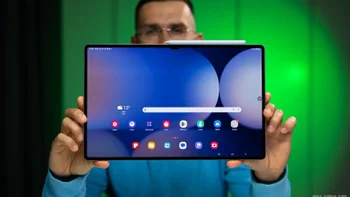Future smartphones could be powered by a technique that uses sugar

Wouldn't it be sweet if you could use sugar to power up the battery in your smartphone? If your battery life is running low, a "spoonful of sugar" could keep your handset running for hours. The process currently being tested allows the sugar-powered cell to run as efficiently as today's regular batteries do. Obviously, this would provide cheaper power.
This is based on a discovery made four years ago by the geniuses at MIT A wire made of carbon nanotubes is lit on both ends, which is coated with a combustible material. Table sugar is used to heat the carbon nanotubes, which creates an electric current. Previous tests produced small amounts of electricity. Now, a Professor in Chemical Engineering at MIT, Michael Strano, has increased the efficiency of the process more than a thousandfold. According to MIT, Strano's team has been able to create a device that produces the same amount of power "pound for pound" as today's best juicers.
Strano says that the improvement in efficiency takes the process from being a mere curiosity to a project that can be commercially exploited. The professor says that the technique is "within striking distance of other portable energy technologies," which include lithium-iron and fuel cells. He also adds that "it’s actually remarkable that this [phenomenon] hasn’t been studied before."
When the experiments first started, more explosive materials were used to create the necessary heat. But the team discovered that sucrose provided an efficient source of heat, resulting in the generation of the electric current. Other materials might be even more efficient. All that is required is heat to burn the wire.
One great discovery is that the power source does not lose energy over time. In other words, the power devices can sit on a store shelf for an indefinite period of time without losing power. It also can scale down to very small sizes, giving manufacturers the room to add larger and more powerful components. Hopefully, this process gets more refined (no pun intended) over time and finds its way into the smartphone of the future.
When the experiments first started, more explosive materials were used to create the necessary heat. But the team discovered that sucrose provided an efficient source of heat, resulting in the generation of the electric current. Other materials might be even more efficient. All that is required is heat to burn the wire.
"We can obtain phenomenal bursts of power, which is not possible from batteries. For instance, the thermopower wave systems can be used for powering long-distance transmission units in micro- and nano-telecommunication hubs."-Kourosh Kalantar-Zadeh, professor of electrical and computer engineering, RMIT University
One great discovery is that the power source does not lose energy over time. In other words, the power devices can sit on a store shelf for an indefinite period of time without losing power. It also can scale down to very small sizes, giving manufacturers the room to add larger and more powerful components. Hopefully, this process gets more refined (no pun intended) over time and finds its way into the smartphone of the future.
source: MIT via BGR
Follow us on Google News










Things that are NOT allowed:
To help keep our community safe and free from spam, we apply temporary limits to newly created accounts: